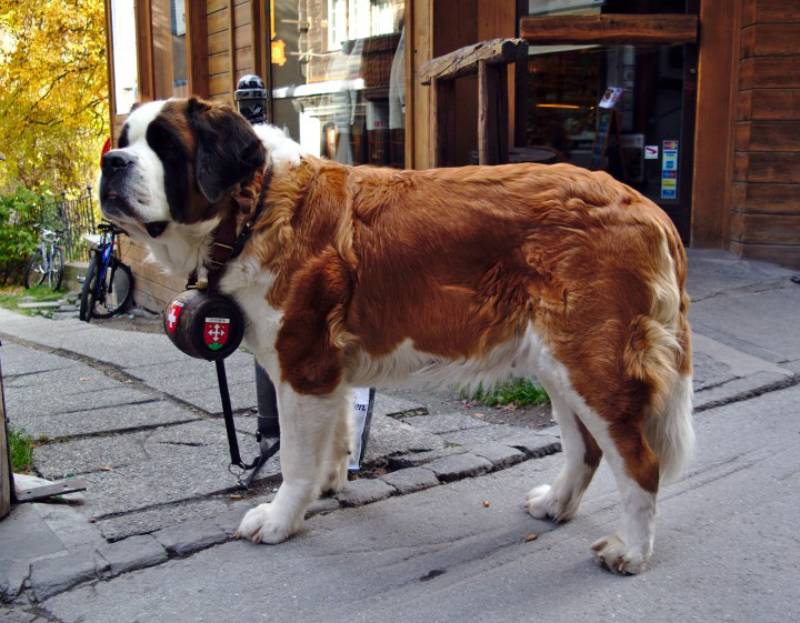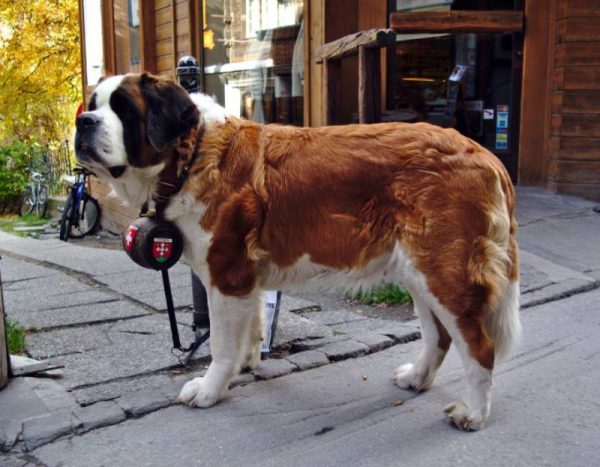If you’ve spent any time looking at or researching St. Bernards, it’s only a matter of time until you see one of their signature barrel collars. But where did these collars come from and what were they for in the first place?
The truth is that the barrel collars are likely nothing more than an artist’s depiction, but that doesn’t mean it doesn’t have an interesting story behind it. Whether it’s from fact or fiction, the barrel collars and the St. Bernard are linked together, and we’ll explain why that’s the case for you here.
A Brief History of the St. Bernard
To understand where the barrel collar comes from with the St. Bernard, you really need to understand the history of the St. Bernard in the first place.
Switzerland has always been a notoriously difficult country to access, and while modern times and technologies have eased the burden a bit, it doesn’t take much research to figure out just how difficult it was to access and travel through Switzerland.
According to legend in 1049 A.D. Saint Bernard of Menthona created a monastery and a hospice through the only thoroughfare between Italy and Switzerland. It was a dangerous passageway, and the monastery served as a haven to help rescue people and get them through the pass.
The monks selected a mastiff-style dog and selectively bred them specifically so they could help with these snow rescue missions, and the result was St. Bernard.
St. Bernards helped the monks detect avalanches before they happened, and their outstanding sense of smell helped them locate and rescue people buried in the snow. St. Bernards became outstanding search and rescue dogs and would even go out and search for people when the weather was too harsh for the monks to venture out.

But What About the Barrel Collars?
While some theories mention the barrel collars holding brandy to help warm up travelers going through the Saint Bernard Pass, this wouldn’t have been beneficial. While brandy might make your extremities feel warmer, it does so by pulling body heat away from your core, which is where you desperately need heat in colder weather.
While this doesn’t necessarily preclude the theory from happening, it does lead credence to the idea that the barrel collar was simply an artistic choice. The artist in question is an 1820 painting by Sir Edwin Landseer.
The painting “Alpine Mastiffs Reanimating a Distressed Traveler” was a success, and it depicted a St. Bernard with a barrel collar around his neck. But even according to the story at the time by Landseer, the barrel collar wasn’t a part of the St. Bernard’s official equipment.
Still, the iconic image and the story behind it stuck in people’s memory, and since then, it’s become a cultural icon of the St. Bernard and Switzerland.

Final Thoughts
While the barrel collar might be little more than a folktale, the truth of the matter is that St. Bernards were search and rescue dogs, and they did a phenomenal job at it for a long time.
Today, advanced technologies make it easier to track people down in these extreme situations, but that doesn’t change the fact that these are dogs that are extremely well suited for the cold and search and rescue operations.
This rich history is where the barrel collar comes from, and whether it’s fact or fiction it’s deeply ingrained in the history of the St. Bernard and Switzerland.
Featured Imaged Credit: Jumpstory











